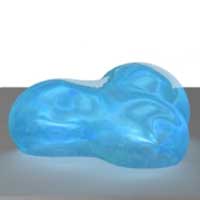 By embedding titanium-based nanosheets in water, scientists have created a material using inorganic materials that can be converted from a hard gel to soft matter using temperature changes.
By embedding titanium-based nanosheets in water, scientists have created a material using inorganic materials that can be converted from a hard gel to soft matter using temperature changes.
Nov 30th, 2020
Read more
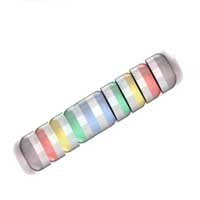 Imagine shrinking barcodes a million times, from millimetre to nanometre scale, so that they could be used inside living cells to label, identify and track the building blocks of life or, blended into inks to prevent counterfeiting. This is the frontier of nanoengineering, requiring fabrication and controlled manipulation of nanostructures at atomic level.
Imagine shrinking barcodes a million times, from millimetre to nanometre scale, so that they could be used inside living cells to label, identify and track the building blocks of life or, blended into inks to prevent counterfeiting. This is the frontier of nanoengineering, requiring fabrication and controlled manipulation of nanostructures at atomic level.
Nov 29th, 2020
Read more
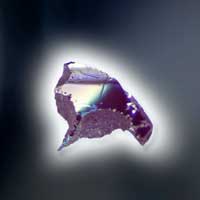 Colder than in outer space, higher pressure than 30 sperm whales on a stamp, and super magnets that could hold two Eiffel Towers: The search for new quantum materials - the materials of the day after tomorrow - is taking place today under extreme conditions. Yet it is often difficult to understand what the researchers actually do in their high-performance laboratories.
Colder than in outer space, higher pressure than 30 sperm whales on a stamp, and super magnets that could hold two Eiffel Towers: The search for new quantum materials - the materials of the day after tomorrow - is taking place today under extreme conditions. Yet it is often difficult to understand what the researchers actually do in their high-performance laboratories.
Nov 29th, 2020
Read more
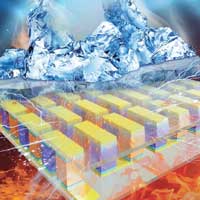 A new study overcomes a major challenge of thermoelectric materials, which can convert heat into electricity and vice versa, improving conversion efficiency by more than 60%.
A new study overcomes a major challenge of thermoelectric materials, which can convert heat into electricity and vice versa, improving conversion efficiency by more than 60%.
Nov 29th, 2020
Read more
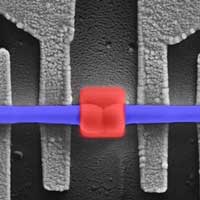 Superconducting devices such as SQUIDS (Superconducting Quantum Interferometry Device) can perform ultra-sensitive measurements of magnetic fields. Physicsts invented a method to 3D-print these and other superconducting devices in minutes.
Superconducting devices such as SQUIDS (Superconducting Quantum Interferometry Device) can perform ultra-sensitive measurements of magnetic fields. Physicsts invented a method to 3D-print these and other superconducting devices in minutes.
Nov 27th, 2020
Read more
 Scientists have discovered a new strongly correlated electronic state in a three-dimensional metal that is a close relative of the two-dimensional quantum Hall state.
Scientists have discovered a new strongly correlated electronic state in a three-dimensional metal that is a close relative of the two-dimensional quantum Hall state.
Nov 26th, 2020
Read more
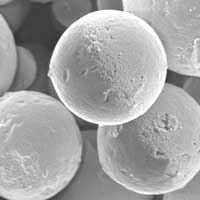 Researchers have studied an impressive behavior of synthetic microswimmers: as soon as the photocatalytic particles leave an illuminated zone, they flip independently and swim back into the light.
Researchers have studied an impressive behavior of synthetic microswimmers: as soon as the photocatalytic particles leave an illuminated zone, they flip independently and swim back into the light.
Nov 26th, 2020
Read more
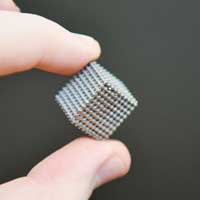 The nanocarbon additive to aluminum powder, obtained from the products of processing associated petroleum gas, will improve the quality of 3D printed aerospace composites by increasing the hardness of products by 1.5 times.
The nanocarbon additive to aluminum powder, obtained from the products of processing associated petroleum gas, will improve the quality of 3D printed aerospace composites by increasing the hardness of products by 1.5 times.
Nov 26th, 2020
Read more
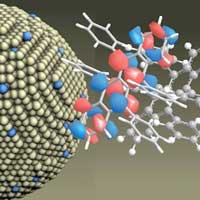 Scientists have developed an approach to improve the generation and luminescent harvesting of molecular triplets by coupling them with lanthanide-doped nanoparticles. This innovation provides new insights on lanthanide nanocrystal-molecule interaction in the optoelectronic field.
Scientists have developed an approach to improve the generation and luminescent harvesting of molecular triplets by coupling them with lanthanide-doped nanoparticles. This innovation provides new insights on lanthanide nanocrystal-molecule interaction in the optoelectronic field.
Nov 26th, 2020
Read more
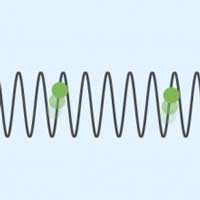 Researchers have created a serpentine path for electrons, imbuing them with new properties that could be useful in future quantum devices.
Researchers have created a serpentine path for electrons, imbuing them with new properties that could be useful in future quantum devices.
Nov 25th, 2020
Read more
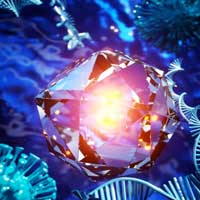 The quantum sensing abilities of nanodiamonds can be used to improve the sensitivity of paper-based diagnostic tests, potentially allowing for earlier detection of diseases such as HIV.
The quantum sensing abilities of nanodiamonds can be used to improve the sensitivity of paper-based diagnostic tests, potentially allowing for earlier detection of diseases such as HIV.
Nov 25th, 2020
Read more
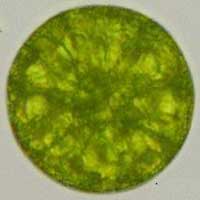 Researchers have investigated the effects of nanosilver, currently used in almost 450 products for its antibacterial properties, on the algae known as Poterioochromonas malhamensis. The results show that nanosilver and its derivative, ionic silver, disturb the alga's entire metabolism. Its membrane becomes more permeable, the cellular reactive oxygen species increases and photosynthesis is less effective.
Researchers have investigated the effects of nanosilver, currently used in almost 450 products for its antibacterial properties, on the algae known as Poterioochromonas malhamensis. The results show that nanosilver and its derivative, ionic silver, disturb the alga's entire metabolism. Its membrane becomes more permeable, the cellular reactive oxygen species increases and photosynthesis is less effective.
Nov 25th, 2020
Read more
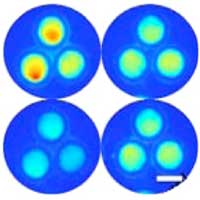 Scientists have developed a new method for detecting bacteria and infections. They use fluorescent nanosensors to track down pathogens faster and more easily than with established methods.
Scientists have developed a new method for detecting bacteria and infections. They use fluorescent nanosensors to track down pathogens faster and more easily than with established methods.
Nov 25th, 2020
Read more
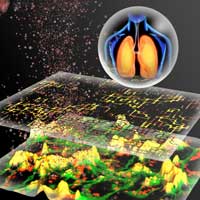 Researchers have developed a novel animal-free method to predict the toxic effect of nanoparticles to the human lung. The method aims to enable the safety-by-design development of safer industrial materials.
Researchers have developed a novel animal-free method to predict the toxic effect of nanoparticles to the human lung. The method aims to enable the safety-by-design development of safer industrial materials.
Nov 24th, 2020
Read more
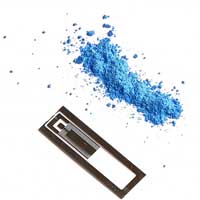 Pioneering research shows how high-frequency sound waves can help build smart materials, new nanoparticles and deliver drugs to the lungs for painless, needle-free vaccinations.
Pioneering research shows how high-frequency sound waves can help build smart materials, new nanoparticles and deliver drugs to the lungs for painless, needle-free vaccinations.
Nov 24th, 2020
Read more
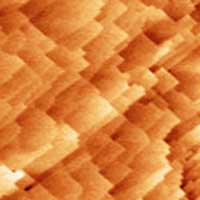 Researchers demonstrate an alternative sputter deposition-based approach for the replication of atomic-scale features that is suited for a very broad range of amorphous alloys, thereby dramatically extending the available chemistries.
Researchers demonstrate an alternative sputter deposition-based approach for the replication of atomic-scale features that is suited for a very broad range of amorphous alloys, thereby dramatically extending the available chemistries.
Nov 24th, 2020
Read more
 By embedding titanium-based nanosheets in water, scientists have created a material using inorganic materials that can be converted from a hard gel to soft matter using temperature changes.
By embedding titanium-based nanosheets in water, scientists have created a material using inorganic materials that can be converted from a hard gel to soft matter using temperature changes.















 Subscribe to our Nanotechnology News feed
Subscribe to our Nanotechnology News feed